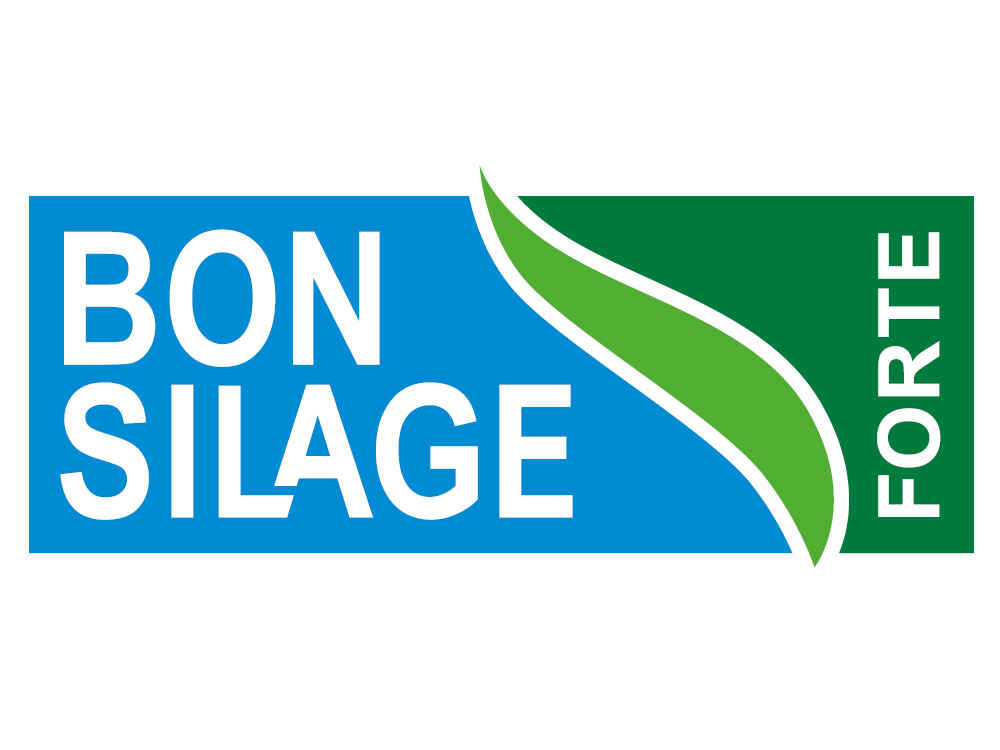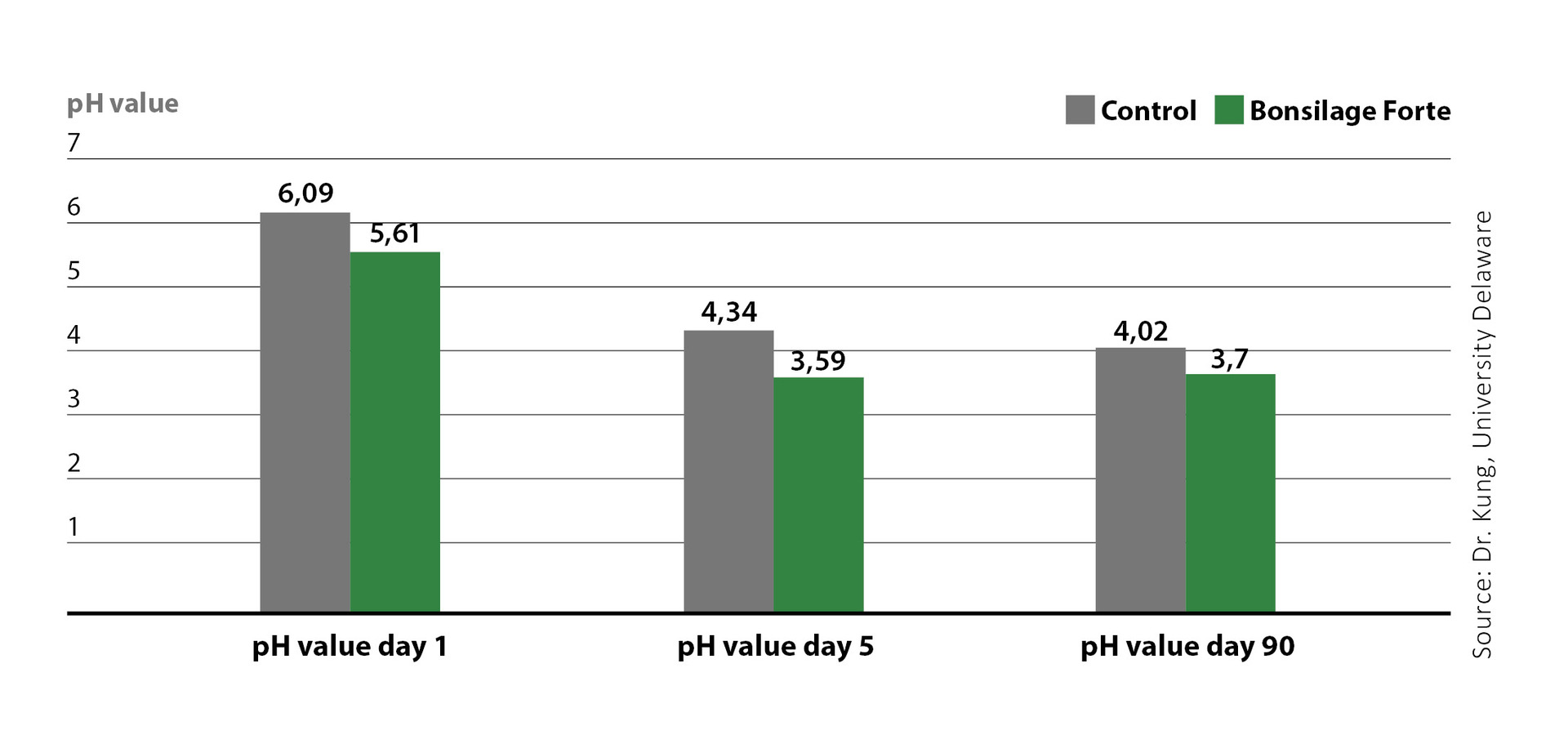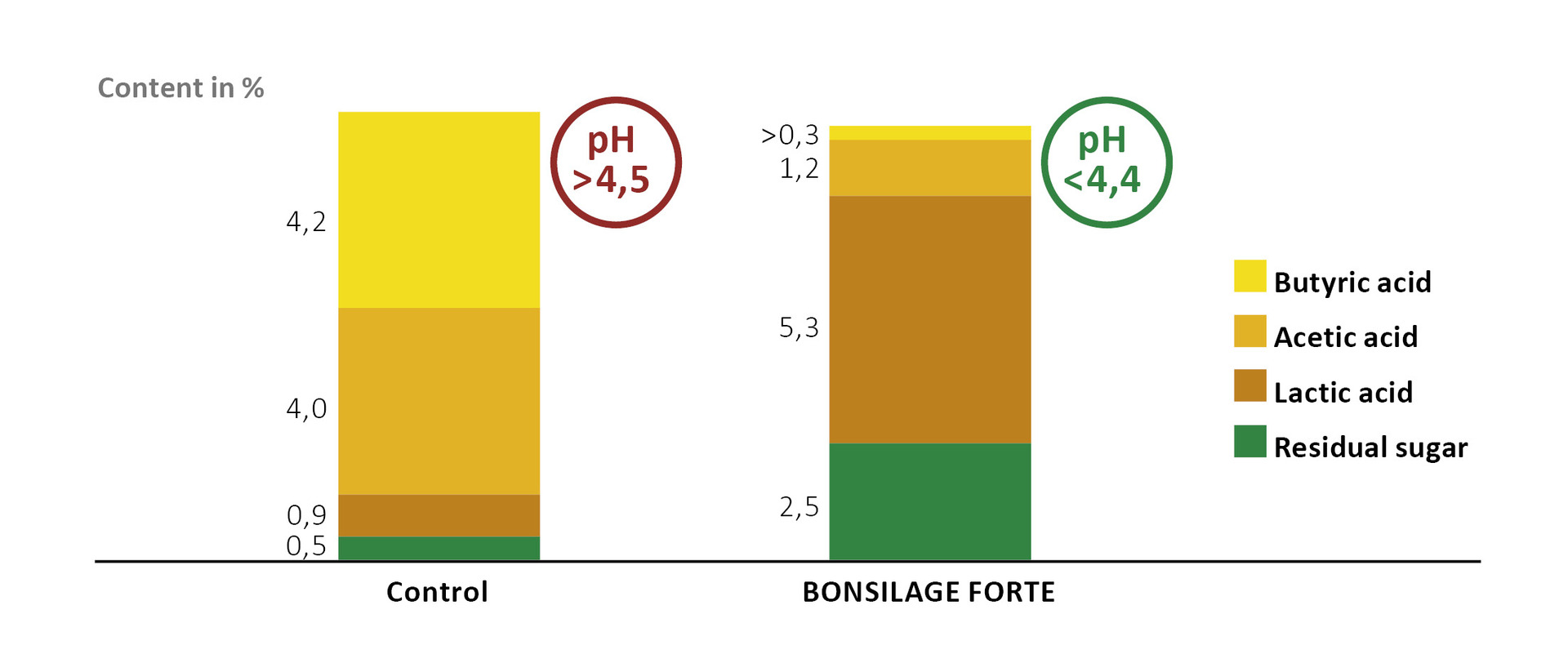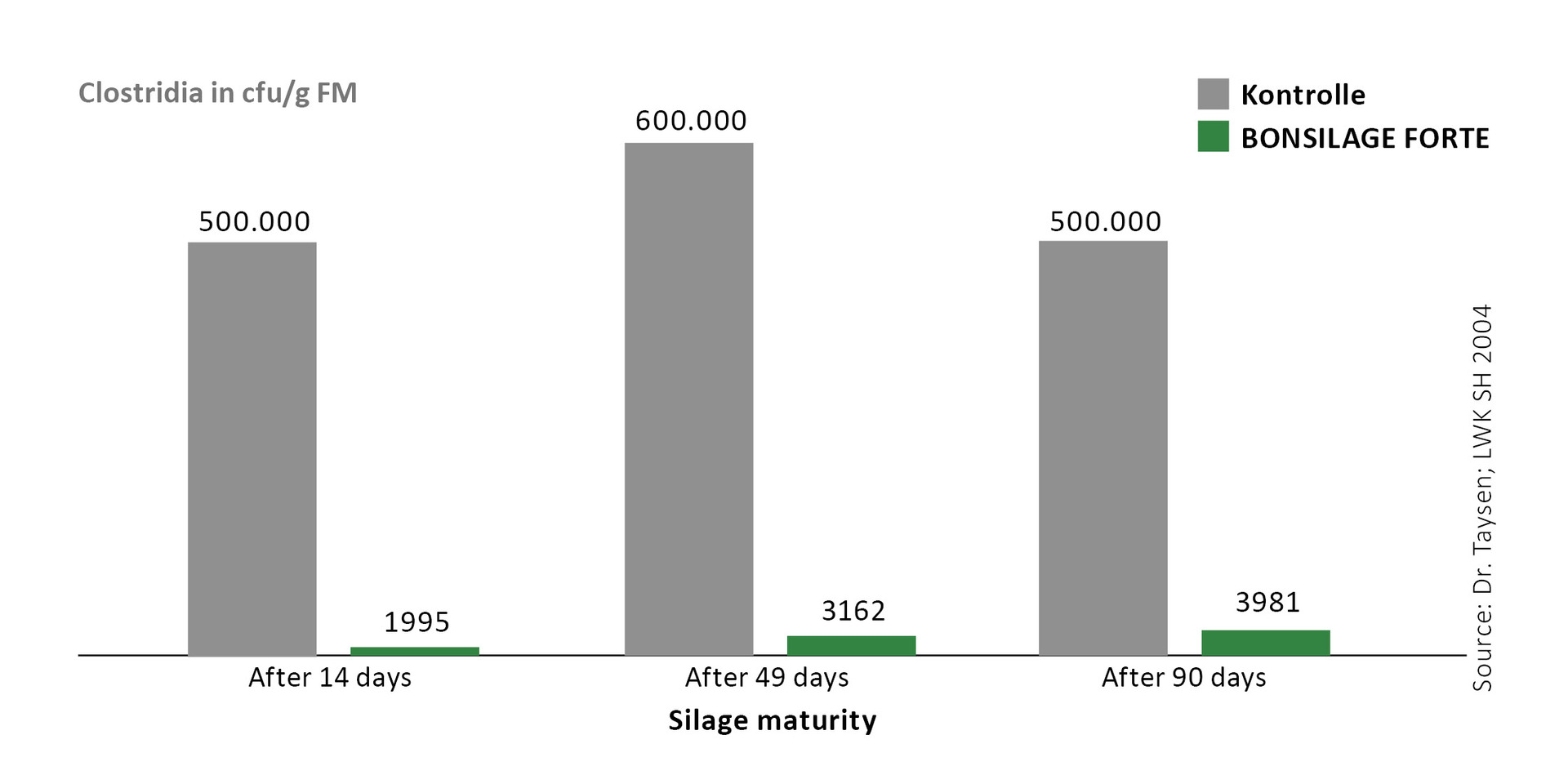
BONSILAGE FORTE - controlling wet and low-sugar grass silages

Unstable damp weather conditions lead to wet and low-sugar grass silages. This makes good fermentation process difficult to achieve - faulty fermentation due to fermentation pests and overturning of the silage are a frequent end result. To counter this danger, the silage additive BONSILAGE FORTE acts specifically with an optimal combination of three strains of lactic acid bacteria (LAB) that have excellent competitive power against Clostridia. This is confirmed by the DLG (German Agricultural Society) with its seals of approval with the directions of action 1b and 5.
Profitable milk production is not possible without high performance from the forage. If the quality of the silage is right, the purchase of cost-intensive concentrated feed can be reduced, and animal health is ensured. In practice, this quality requirement is not always easy to meet, as the weather often plays a decisive role.
What happens to low-sugar and damp silage?
If silage is not wilted as it is too wet, too little sugar is concentrated in the source material. This results in too low an available energy for the lactic acid bacteria (LAB) to form sufficient amounts of lactic acid quickly. An insufficient amount of lactic acid at the beginning of ensiling leads to an insufficient lowering of the pH value. BONSILAGE FORTE achieves a rapid lowering of the pH value (see Figure 1) and thereby leads to stable silages. A low amount of lactic acid also leads to a competitive situation between lactic acid bacteria and butyric acid producers, such as Clostridia in particular, which can now multiply strongly.
What role do Clostridia play in the ensiling process?
Clostridia convert the lactic acid present into butyric acid and thus counteracts a drop in pH. In addition to sugar, Clostridia can also degrade the protein present to ammonia and biogenic amines. Clostridial activity results in overturned silages with greatly reduced palatability and low protein qualities. In the case of severe damage, toxic levels of biogenic amines, degradation products of the Clostridia metabolism, are produced, which cause lasting damage to the health of the herd. In this extreme case, the silage must be discarded.
What does the pH value say about ensiling success?
When looking at the silage analysis, the pH value gives a first indication of ensiling success. If the pH value is below 4.4, the LAB has acidified the silage sufficiently. If the pH value is above 4.5, there is an increased risk that the butyric acid-forming Clostridia will continue to establish themselves and that the silage may overturn (see Figure 2).
How do the three LAB strains in BONSILAGE FORTE complement each other?
BONSILAGE FORTE is equipped with three LAB strains that are optimally matched to each other in their interaction, giving them excellent competing power against Clostridia. The LAB strain Lactobacillus paracasei is able to use the existing reserve carbohydrates (multi-chain sugar molecules) in the ensiled material and thus alleviate the sugar deficiency. Together with the two LAB strains Lactococcus lactis and Pediococcus acidilactici, a rapid pH reduction is now possible together with Clostridia growth, efficiently suppressing butyric acid formation (see Figure 3). Protein degradation is reduced and low levels of ammonia are the result.
BONSILAGE FORTE - for a better fermentation process
The rapid and intensive reduction of the pH value and the exceptionally good competitive strength of the LAB in BONSILAGE FORTE ensure a lasting inhibition of fermentation pests. The silages are protected against high protein and amino acid degradation and losses in digestibility. The palatability, and therefore the feed intake as well as the improvement in digestibility are further essential contributions that BONSILAGE FORTE can make to more economical and sustainable milk production.

Average fermentation results: Grass silage following growth less than 25 % DM, 6.1 MJ NEL, 17 % crude protein, 11 % crude ash

Gras, 1. cut, 26 - 32% DM
